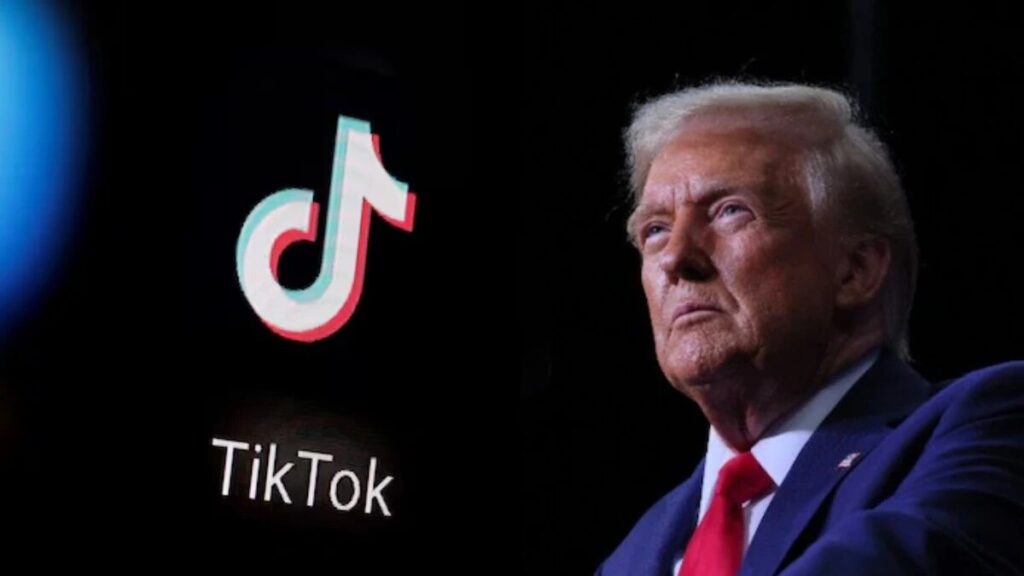TikTok has officially returned to U.S. app stores after a brief removal, as former President Donald Trump granted a temporary delay on the enforcement of a nationwide ban. The Chinese-owned social media giant, operated by ByteDance, faced potential prohibition under a law requiring its sale on national security grounds. However, with Trump’s recent executive order pushing the deadline back by 75 days, TikTok has resumed operations—at least for now.
The decision has sparked debate over data privacy, national security concerns, and the broader implications for Chinese-owned digital platforms in the U.S. While TikTok users celebrate the app’s return, the uncertainty surrounding its long-term future remains a pressing issue.
TikTok, which boasts millions of American users, was removed from Apple’s App Store and Google Play last month as a U.S. law, signed by then-President Joe Biden, came into effect on January 19. The legislation mandates that ByteDance must either sell TikTok’s U.S. operations or face an outright ban, citing fears that the Chinese government could exploit the app for espionage.
This move is part of a broader effort by U.S. lawmakers to curb the influence of Chinese-owned digital platforms. The ban, if enforced, would mark the first time a major social media platform has been prohibited in the United States, setting a precedent for future government interventions in the tech sector.
Trump’s 75-Day Delay: What Does It Mean?
On January 20, Trump signed an executive order delaying the TikTok ban for 75 days, effectively allowing the app to continue operating in the U.S. while discussions about its future take place. Analysts suggest that Google and Apple may have hesitated to reinstate TikTok until they received assurances from the administration that they would not face legal consequences for hosting or distributing the app.
Trump’s directive explicitly stated that companies managing mobile app stores, such as Apple and Google, would not face penalties for keeping TikTok available. This assurance likely played a significant role in the app’s return to the digital marketplace.
Despite the ongoing legal and political turmoil, TikTok remains one of the most popular social media platforms in the U.S. According to market intelligence firm Sensor Tower, TikTok had over 52 million downloads in 2024, with Apple’s App Store accounting for 52% and Google Play accounting for 48%.
The app’s enormous influence and revenue-generating potential have attracted interest from potential buyers. Former Los Angeles Dodgers owner Frank McCourt is among those exploring an acquisition of TikTok’s U.S. operations, with analysts estimating the platform’s value at approximately $50 billion.
The Road Ahead: Sale or Ban?
While TikTok is temporarily safe, its long-term future in the U.S. is far from guaranteed. Trump has hinted that the 75-day deadline could be extended, suggesting that negotiations over the app’s ownership are ongoing. He also confirmed that discussions with potential buyers are in progress, with a final decision on the platform’s fate expected by February.
If ByteDance refuses to sell, TikTok could face another removal from U.S. app stores, forcing millions of American users to find alternative platforms. This situation raises critical questions about the intersection of national security, digital freedom, and the growing divide between U.S. and Chinese tech giants.
Conclusion: A Defining Moment for Social Media Regulation
TikTok’s return to U.S. app stores marks a significant moment in the ongoing struggle between regulatory oversight and technological innovation. The platform’s fate will not only impact its millions of users but could also set a precedent for how governments worldwide handle foreign-owned social media companies.
As discussions continue, the key question remains: Will ByteDance agree to sell TikTok’s U.S. operations, or will the app ultimately be banned? Either outcome could reshape the future of digital platforms and the global tech landscape.
